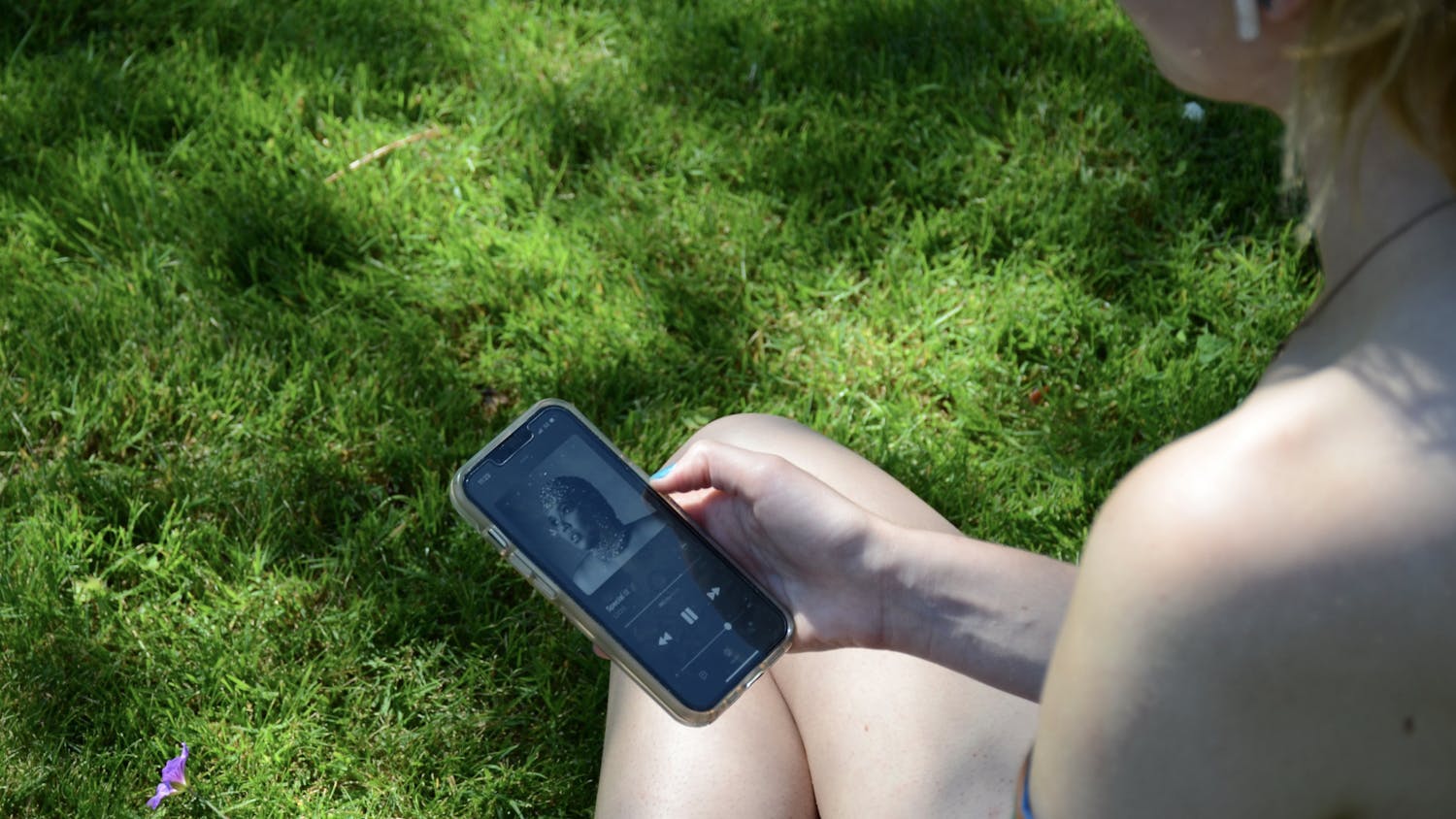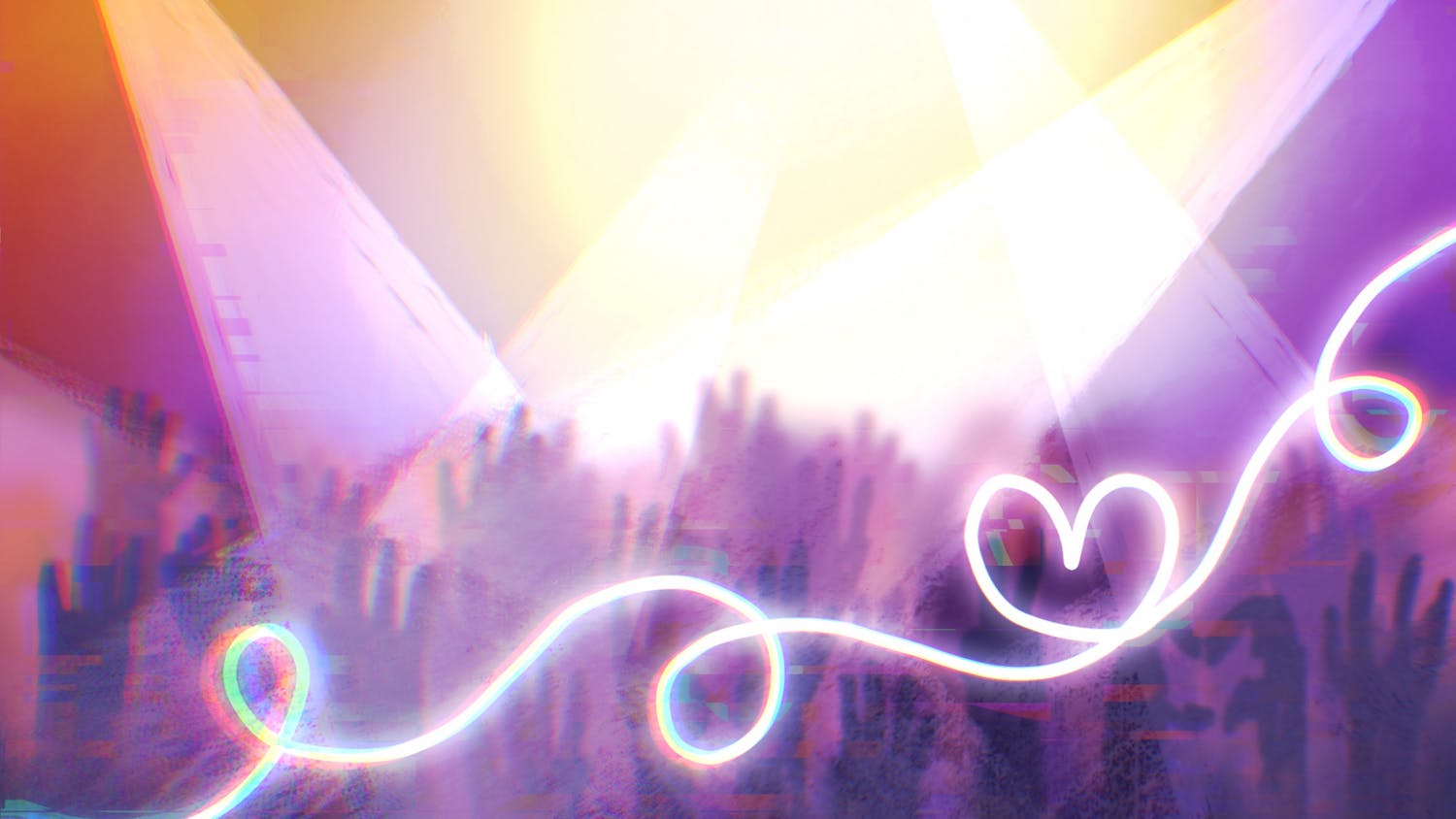Note: All photos in this story are courtesy of Evan Rumble.
 On the surface, it might appear that Evan Rumble snapped his fingers and was immediately granted his wish of being an art teacher.
Not exactly, Rumble said. He graduated from Western’s art education program last March during winter quarter, completed his remaining student teaching hours and substituted until the academic year was over in mid-June.
He then moved back to his hometown of Ridgefield, Washington.
“I had one day to move back and the following Monday, I had a job interview at Washougal High School,” he said. “Three days after that, they offered me the job.”
“It was crazy, but fortunate sequence of events, and it worked out really well,” Rumble said.
Was it easy for him to find a job as an art teacher?
“It probably looks and sounds like it was”, he said, “but I think the reality of getting art teaching job right after college is not an easy prospect. I think that it was because I was working on it for over three years.”
He said he’d been slating himself to get a teaching position ever since he made up his mind to commit to it. But, it took him a while to make up his mind—he didn’t take any art classes his first quarter at Western, and then became a fine art student.
“A year after I transferred here, I quit my [restaurant] job and decided to lay all my cards on the table for this art education [career],” he said. “So I spent the next two years really solidifying myself in the community and education world around Bellingham. I really rolled the dice on that.”
He eventually earned a presidential award from Western, one of the several 2015 Western Washington University Presidential Scholar awards. They're given to high-achieving students who have shown they have helped further multicultural programs and the community.
The “dice roll” that Rumble gambled on paid off because of his steady work, but he also credits the teachers he met along the way—he advises current Western students to get to know their teachers.
“I think it should be everybody’s goal, in their own individual programs, to know at least a couple of their professors on a first-name basis,” he said. “If you can say ‘hi’ and they know you, that’s a good thing because that means you’re making a connection with them. Man, can they help you out. Holy smokes.”
His professors did so much for him, Rumble said. “I feel they are often untapped resources.”
Philosophy
“Art is a way of thinking and learning about everything else, that’s what I believe,” Rumble said. ”It’s so valuable for students to tap into this creative center.”
No matter what career students eventually go into— science, technology, medicine, government, education — he feels that creativity is a powerful skill and can help students develop passion, have a healthy outlet and generate original thinking.
“Creative thinking is so imperative,” Rumble said. “Not only for your job, but for loving your life—because it keeps you interested. If you’re creative, you’re interested.”
He acknowledges that not every person has a need to create art, but he sees what he calls an “untapped creative center” in many people.
“Just ask all the forward-thinking, progressive companies [about creativity]”, he said. “They’re bringing in artists to talk to brokers. Creativity is highly valued in the workforce. But, it seems to me that it’s often stifled or oppressed in primary or secondary education.”
On the surface, it might appear that Evan Rumble snapped his fingers and was immediately granted his wish of being an art teacher.
Not exactly, Rumble said. He graduated from Western’s art education program last March during winter quarter, completed his remaining student teaching hours and substituted until the academic year was over in mid-June.
He then moved back to his hometown of Ridgefield, Washington.
“I had one day to move back and the following Monday, I had a job interview at Washougal High School,” he said. “Three days after that, they offered me the job.”
“It was crazy, but fortunate sequence of events, and it worked out really well,” Rumble said.
Was it easy for him to find a job as an art teacher?
“It probably looks and sounds like it was”, he said, “but I think the reality of getting art teaching job right after college is not an easy prospect. I think that it was because I was working on it for over three years.”
He said he’d been slating himself to get a teaching position ever since he made up his mind to commit to it. But, it took him a while to make up his mind—he didn’t take any art classes his first quarter at Western, and then became a fine art student.
“A year after I transferred here, I quit my [restaurant] job and decided to lay all my cards on the table for this art education [career],” he said. “So I spent the next two years really solidifying myself in the community and education world around Bellingham. I really rolled the dice on that.”
He eventually earned a presidential award from Western, one of the several 2015 Western Washington University Presidential Scholar awards. They're given to high-achieving students who have shown they have helped further multicultural programs and the community.
The “dice roll” that Rumble gambled on paid off because of his steady work, but he also credits the teachers he met along the way—he advises current Western students to get to know their teachers.
“I think it should be everybody’s goal, in their own individual programs, to know at least a couple of their professors on a first-name basis,” he said. “If you can say ‘hi’ and they know you, that’s a good thing because that means you’re making a connection with them. Man, can they help you out. Holy smokes.”
His professors did so much for him, Rumble said. “I feel they are often untapped resources.”
Philosophy
“Art is a way of thinking and learning about everything else, that’s what I believe,” Rumble said. ”It’s so valuable for students to tap into this creative center.”
No matter what career students eventually go into— science, technology, medicine, government, education — he feels that creativity is a powerful skill and can help students develop passion, have a healthy outlet and generate original thinking.
“Creative thinking is so imperative,” Rumble said. “Not only for your job, but for loving your life—because it keeps you interested. If you’re creative, you’re interested.”
He acknowledges that not every person has a need to create art, but he sees what he calls an “untapped creative center” in many people.
“Just ask all the forward-thinking, progressive companies [about creativity]”, he said. “They’re bringing in artists to talk to brokers. Creativity is highly valued in the workforce. But, it seems to me that it’s often stifled or oppressed in primary or secondary education.”
 Tools
Rumble said he thinks of his life and classroom as his current art project. Right now, he’s working on a spray-paint image inspired by a memory of some brass duck-head bookends that he remembers from growing up.
“I’m taking images that come into my head when I think about my childhood and I’m turning these images into pop art,” Rumble said. “That’s what I’m most interested in right now, spray painting duck-heads,” he laughed.
He uses vinyl fabric to cover areas of his chosen background, spray paints the entire piece and then pulls off the vinyl to get clean, crisp images.
Inspiration
“I’ve learned to stop and smell the roses,” Rumble said. “Day-to-day living is really inspiring for me. You can even get inspiration on that one morning you have a hangover after Halloween,” he said. “Or, like right now, I’m looking outside my window and everything is just so crazy green right now. It’s emerald. Who knows? That color might even find its way into my next project.”
Rumble feels strongly that art should be made more accessible, meaning that art shouldn’t be solely reserved for the high-class, wine and caviar segments of society and instead made so unintimidating that all viewers can feel qualified to enjoy art.
“If you’re making it for just one sector of society, what’s the fricking point of making it? The whole point is for viewership—for people to experience,” he said. “It may good for you to make, but 50 percent of the project is the interpretation of viewers.
Tools
Rumble said he thinks of his life and classroom as his current art project. Right now, he’s working on a spray-paint image inspired by a memory of some brass duck-head bookends that he remembers from growing up.
“I’m taking images that come into my head when I think about my childhood and I’m turning these images into pop art,” Rumble said. “That’s what I’m most interested in right now, spray painting duck-heads,” he laughed.
He uses vinyl fabric to cover areas of his chosen background, spray paints the entire piece and then pulls off the vinyl to get clean, crisp images.
Inspiration
“I’ve learned to stop and smell the roses,” Rumble said. “Day-to-day living is really inspiring for me. You can even get inspiration on that one morning you have a hangover after Halloween,” he said. “Or, like right now, I’m looking outside my window and everything is just so crazy green right now. It’s emerald. Who knows? That color might even find its way into my next project.”
Rumble feels strongly that art should be made more accessible, meaning that art shouldn’t be solely reserved for the high-class, wine and caviar segments of society and instead made so unintimidating that all viewers can feel qualified to enjoy art.
“If you’re making it for just one sector of society, what’s the fricking point of making it? The whole point is for viewership—for people to experience,” he said. “It may good for you to make, but 50 percent of the project is the interpretation of viewers. [Why do it] if your project is only meant to be interpreted by five people--your gallery-owner, the art critic, a collector?” Rumble said. “Why make art for five people when you can make it for five hundred or 50 thousand or 5 million, like some of these artists who do giant public works.”
Next Steps
Rumble said he’s worked so long to get to the position where is now, he’s not yet sure what’s next. Long term, he’d like to work developing his own professional art practice while being an effective teacher.
In the meantime, he plans to continue teaching his classes to create art—working to encourage his students to utilize their innate creativity.
[Why do it] if your project is only meant to be interpreted by five people--your gallery-owner, the art critic, a collector?” Rumble said. “Why make art for five people when you can make it for five hundred or 50 thousand or 5 million, like some of these artists who do giant public works.”
Next Steps
Rumble said he’s worked so long to get to the position where is now, he’s not yet sure what’s next. Long term, he’d like to work developing his own professional art practice while being an effective teacher.
In the meantime, he plans to continue teaching his classes to create art—working to encourage his students to utilize their innate creativity.





